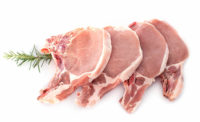Much has been reported with regard to the developments of the relaxation of U.S. restrictions on trade with Cuba. Re-establishing a normalcy to diplomatic relations between both of our countries may certainly be a process that will take a bit more time, but new developments have further opened the door for agricultural sectors, particularly American pork processors.
In November, the Cuban Foreign Trade Minister showcased 326 commercial opportunities for interested foreign investment partners at the 33rd annual Havana International Fair. At least five of these projects are specifically in the production and commercialization of pork products that would result in either a 100 percent foreign-owned corporation or a joint venture with the Cuban government.
Currently, Europe and Canada account for the vast majority of pork/pork variety exports into Cuba at well over 4,000 and 8,000 metric tons per year, respectively. Meanwhile, the U.S. lags behind with a TOTAL of 1.6 metric tons from 2012 to 2014. These figures are also indicative of the market position in Cuba of U.S. agriculture as a whole. Since 2012, U.S. ag has seen a shrinking trend in market share, while the European Union has reaped the benefits.
However, Cuba’s new push for foreign partnerships is truly a game-changer and a viable tool for the United States to take a leadership stake in the Cuban pork market.
The U.S. Meat Export Federation (USMEF) has wisely informed the industry that marketing pork in Cuba will not be the same as it is in the rest of Latin America, for reasons ranging from politics to a less-developed distribution and supply chain system in Cuba (by comparison to other Latin American markets). But this may very well be the greatest attraction for a new player to enter the market, set new standards for domestic production and meet growing pork demand from not only a surge in the Cuban hospitality and tourism sector, but from the general population as well.
“For a country that imports 80 percent of its food, accounting for a current expenditure of $2 billion annually, there is now a tangible opportunity to become the exclusive domestic producer and even exporter of the same products they now import,” said George L. San Jose, chairman and president of the San Jose Network, a marketing group that specializes in Latin American market expansion for U.S.-based companies.
These factors will serve to the United States’ advantage: an emerging market with new joint-venture opportunities available and a relaxation of trade sanctions in the works, only a short boat ride away.
Cuba is now a viable opportunity for those who raise or process hogs, if they begin the process now.
Of key importance is to have the right business cultural context for not only doing business in Latin America, but specifically with Cuba. As such, due diligence should start now, as should preliminary conversations with the various representatives of commercial opportunities. Processors/producers should keep in mind that the required process of becoming pre-qualified, registered and licensed to do business in Cuba will take six to seven months.
A new Cuba is just beginning to emerge; evidence comes from the $8.2 billion worth of opportunities across these 326 pre-approved projects. The embargo as we know it has undergone minimization and continues to be diluted on what seems like a monthly basis.
Regardless of whether the final death to the embargo comes next month or a year from now, the steps just outlined must take place before anyone can sell or produce anything in Cuba. NP



Report Abusive Comment